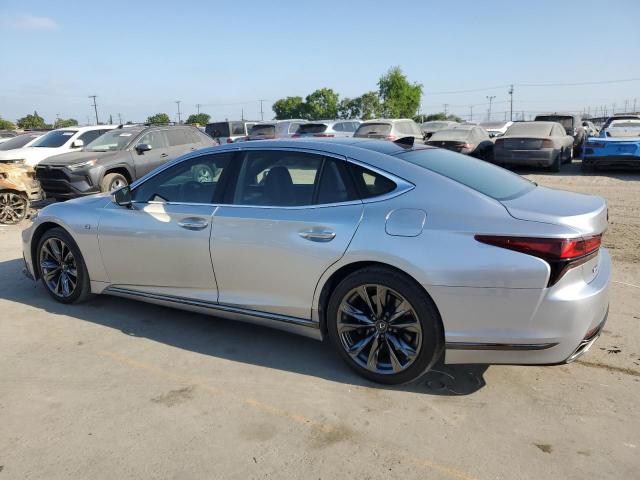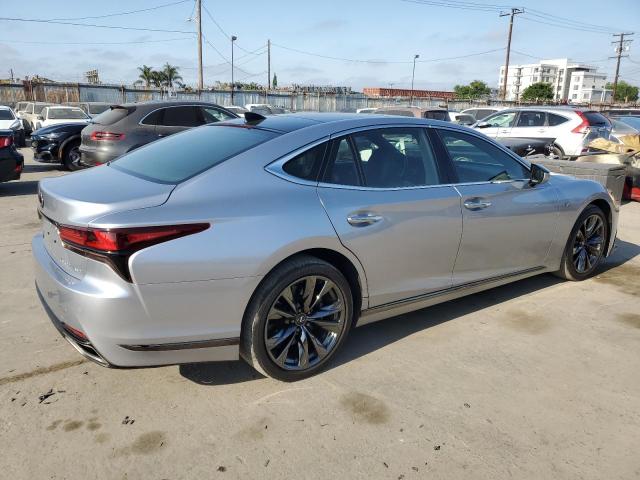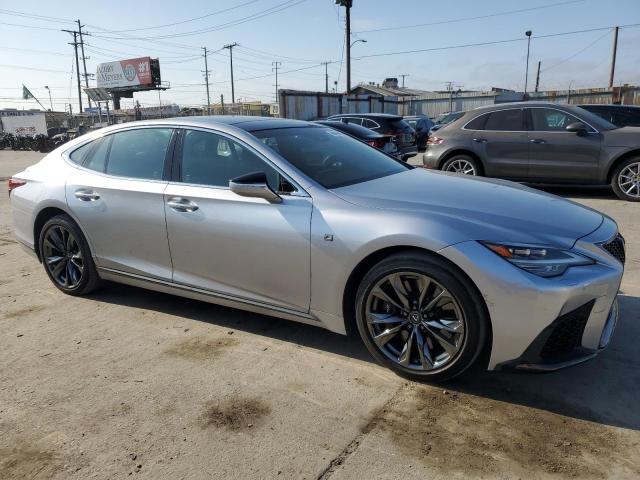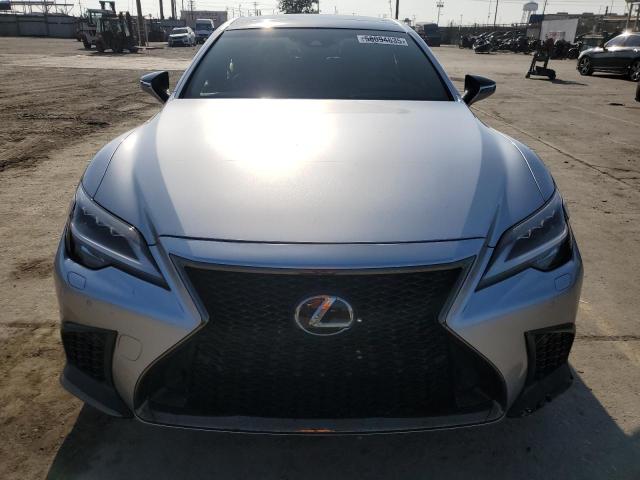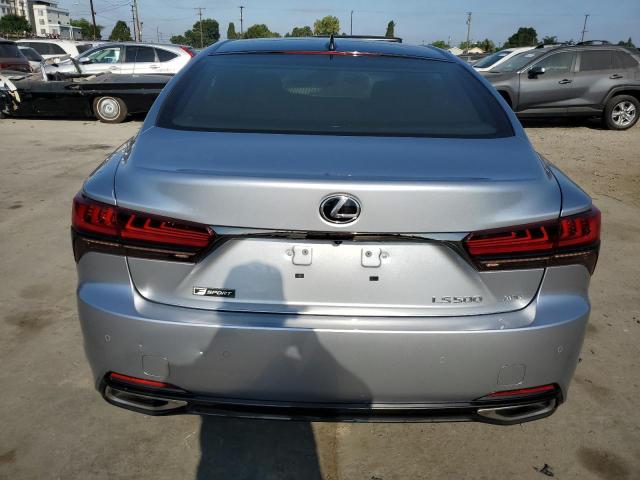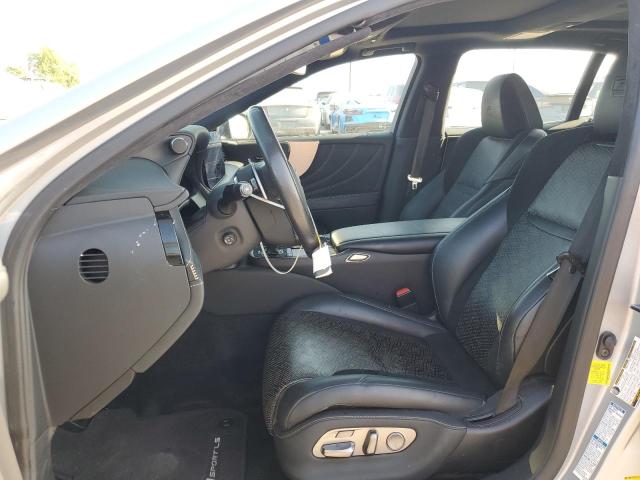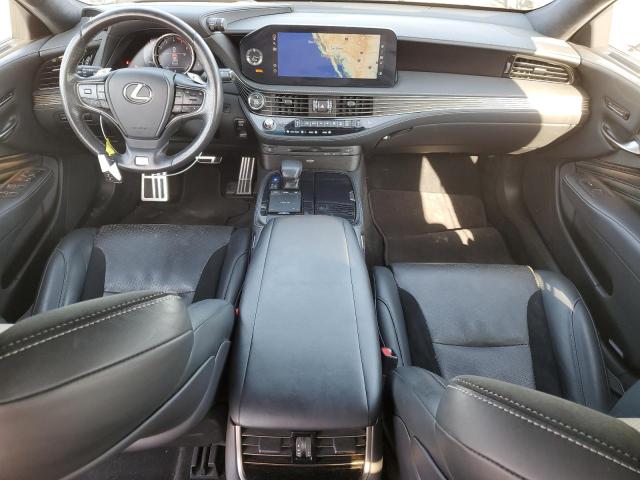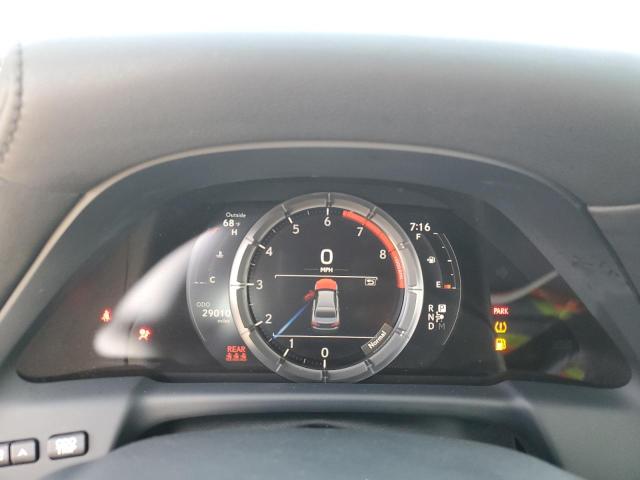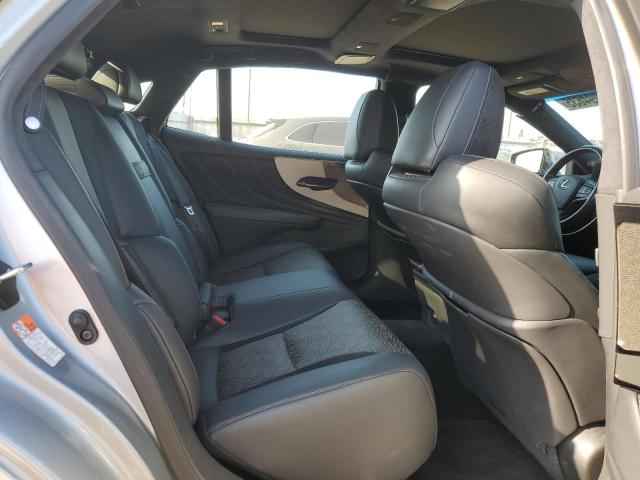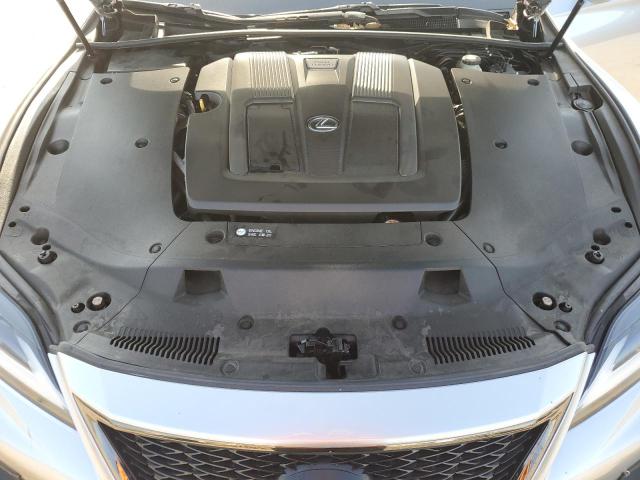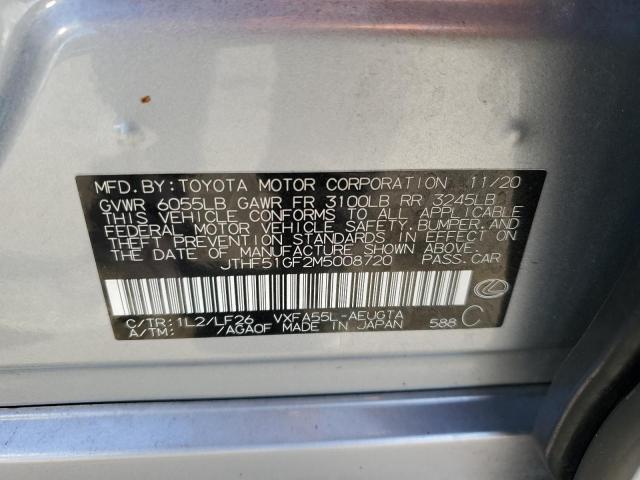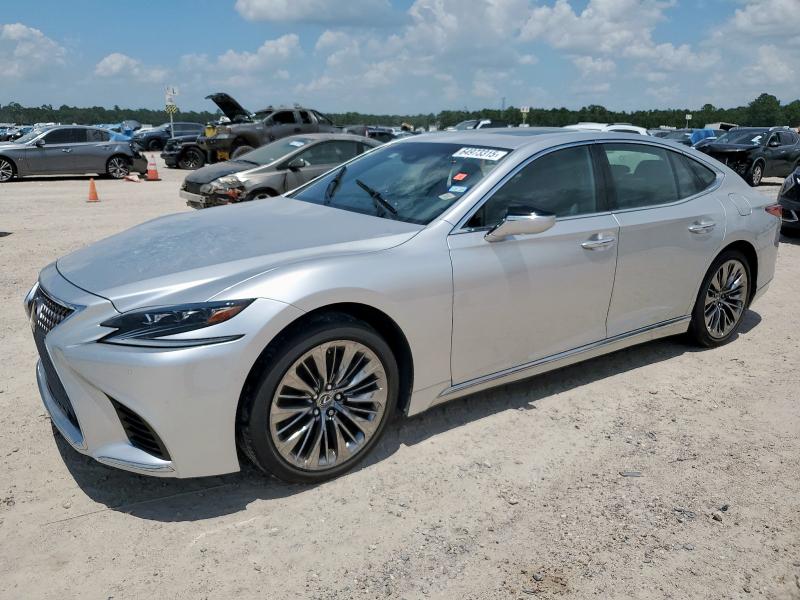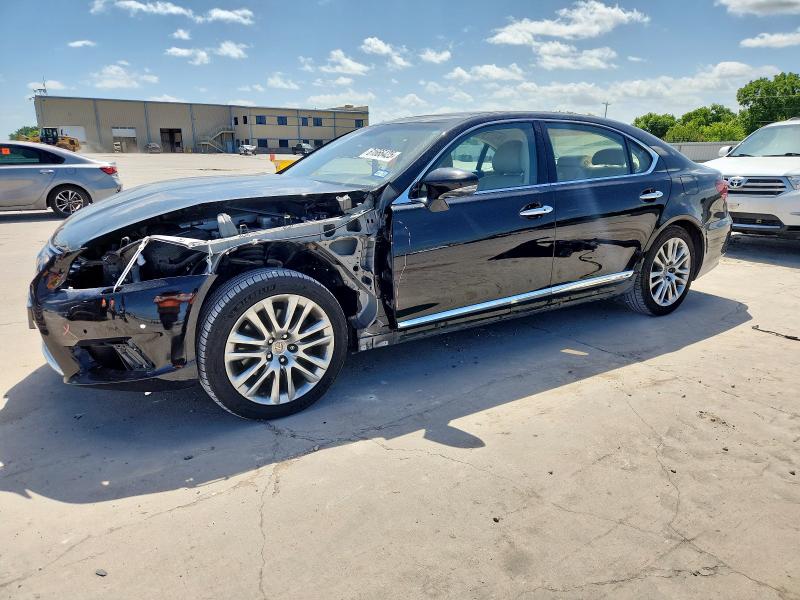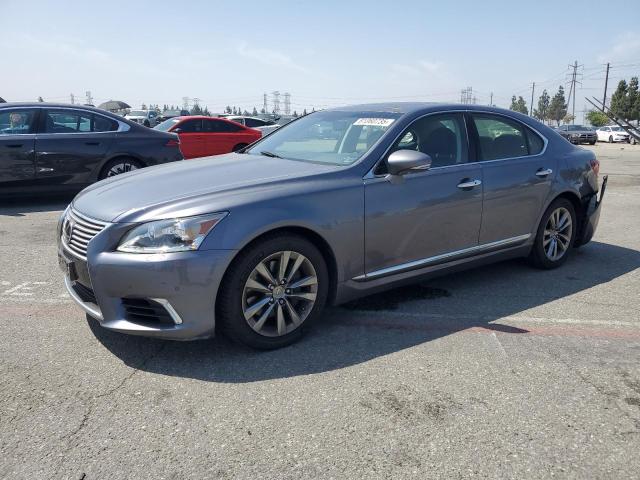2021 LEXUS LS | JTHF51GF2M5008720
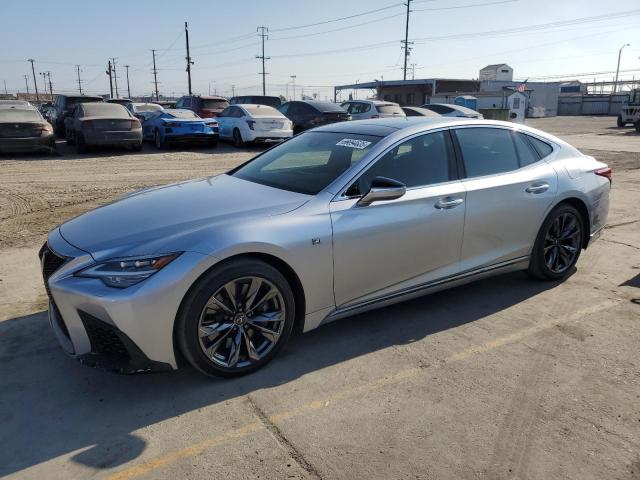 ❯
❯Lot details
- Sale Date2025-06-12
- Lot Number58094635
- ACV52409 $
- Sale documentAL - CERT OF TITLE-SALVAGE TITLE
- LocationCA - LOS ANGELES
- Odometer29,010 miles (46,687 km)
- Primary DamageFRONT END
- Secondary DamageREAR END
Vehicle specifications
2
~$110,000
Engine: 3.5L twin-turbocharged V6
Torque: 600 Nm
0–100 km/h: ~4.9 s
The Lexus LS 500 may no longer carry a naturally aspirated V8, but its 416 hp twin-turbo V6 brings smooth, turbine-like acceleration, with a strong 600 Nm of torque from just 1,600 rpm. This allows the large luxury sedan to accelerate from 0–100 km/h in under 5 seconds, rivaling performance variants of the BMW 7 Series and Audi A8.
The F Sport variant adds rear-wheel steering (on RWD), active sway bars, a Torsen limited-slip differential, and a firmer adaptive suspension setup. While it doesn’t turn the LS into a true sport sedan, it meaningfully sharpens reflexes and reduces body roll — especially in tight corners or highway transitions.
Design-wise, the LS blends Japanese elegance with aggressive coupe-like proportions. Inside, it offers hand-pleated door trims, Kiriko glass, laser-cut wood inlays, and Takumi-level materials. The driver-focused cockpit is enhanced by 20-way adjustable seats, digital instrumentation, and refined switchgear.
Despite its mass, the 10-speed transmission is responsive and intuitive in Sport S+ mode, and the twin-turbo V6 remains refined even under full throttle — offering quiet power delivery rather than brashness.
The Lexus LS 500 F Sport earns its place in the performance registry as the most dynamic and powerful version of Lexus’s luxury flagship, blending luxury-first refinement with meaningful GT-level acceleration — a car built not to intimidate, but to impress through silent precision and engineering integrity.
Final Bid Lexus LS (2021)
$16,800
$29,363
$56,000
Body Styles
Four-door full-size flagship luxury sedan with long-wheelbase proportions, coupe-inspired roofline, and frameless doors. Based on Lexus' GA-L (Global Architecture – Luxury) platform, shared with the LC coupe, offering low center of gravity and a dynamic driving posture.
Model Name Meaning (Manufacturer)
“LS” stands for Luxury Sedan, a badge first introduced in 1989 with the LS 400 — the car that launched Lexus as a luxury brand. The fifth-generation LS (XF50), introduced for 2018, marked a dramatic departure from conservative design: no more V8, fastback styling, and sportier dynamics. Lexus focused on “omotenashi” – the Japanese philosophy of hospitality – with interior comfort and serenity playing a central role. The LS 500h is Lexus’ first application of its Multi-Stage Hybrid System in a sedan.
Model Name Meaning (Languages)
“LS” is a concise, global model code that avoids localization challenges, functioning seamlessly across Europe, North America, Asia, and the Middle East. “h” signifies hybrid powertrain, now common across the Lexus range. Unlike traditional alphanumeric German naming, the LS leans on clarity and legacy — especially among loyal luxury buyers seeking Japanese engineering with understated branding.
Body & Interior Colors and Rims
Represents the pinnacle of Lexus craftsmanship, combining Japanese design philosophy, advanced technology, and flagship luxury. With its striking silhouette, intricate detailing, and highly customizable trims, the LS offers a wide variety of body colors, interior themes, and wheel options that reflect both traditional elegance and avant-garde modernity.
The body color palette includes a sophisticated range of metallic and pearlescent finishes. Core colors such as Eminent White Pearl, Caviar (deep black), and Atomic Silver provide timeless, high-gloss elegance. For a more expressive appearance, Lexus offers Manganese Luster, Matador Red Mica, Moonbeam Beige Metallic, and Nightfall Mica (deep blue) — each reflecting the LS’s sculpted surfaces with fluid light play. In the F SPORT trim, unique finishes such as Ultra White and Obsidian accentuate the sedan’s aggressive styling, especially when paired with dark mesh grille inserts and black trim accents. These color choices are enhanced by Takumi-level paint techniques, including multi-layer coating and hand polishing for depth and reflectivity.
Inside, the LS offers one of the most exquisitely crafted interiors in the luxury segment. Standard interior themes include Black, Chateau (beige), Flaxen (camel), and Palomino (tan), available in smooth or semi-aniline leather depending on the trim. The ultra-luxury Executive Package introduces Kiriko glass trim, hand-pleated door panels, and ambient lighting inspired by Japanese lanterns, creating an atmosphere of refined artistry. The F SPORT models include unique seat patterns, aluminum trim, and sportier color schemes such as Black with Circuit Red accents. Premium materials like open-pore wood, Shimamoku laser-etched veneers, and Ultrasuede headliners define the Takumi Craftsmanship philosophy, emphasizing tactility and detail in every surface.
Wheels and rims range in size from 19 to 20 inches, with designs that balance elegance and performance. Standard LS trims come with multi-spoke alloy wheels in machined or silver finishes, designed for comfort and quiet rolling. Higher trims, such as the LS 500 with Executive Package, receive polished 20-inch multi-layer wheels that enhance the car’s stately presence. The F SPORT models ride on 20-inch split-10-spoke dark metallic alloy wheels, contributing to a more dynamic and aggressive profile. These wheels are paired with performance-oriented run-flat tires and often include adaptive variable suspension tuning for a more athletic driving experience.
Top Expensive Options
- Executive Package with Rear Ottoman Seats (22-way power, massage, shiatsu): ~$17,100
- Kiriko Glass and Hand-Folded Interior Trim Package: ~$6,000
- Mark Levinson Reference 23-Speaker Audio System: ~$1,940
- Adaptive Variable Air Suspension with Access Mode: ~$1,500
- 24" Color Head-Up Display: ~$1,200
- Rear Seat Entertainment with Dual Screens: ~$2,265
- Art Wood Organic Trim or Herringbone Matte: ~$1,300
- Lexus Safety System+ A (semi-autonomous L2 assist): standard on upper trims
- Panoramic View Monitor with 360° Cameras: ~$800
- Premium Paint (Infrared, Manganese Luster): ~$595
vs Competitors
The LS competes directly with the Mercedes-Benz S-Class, BMW 7 Series, Audi A8, and Genesis G90. While the Germans lead in tech flash and brand prestige, the Lexus LS stands apart with its unmatched cabin artistry, legendary build quality, and whisper-quiet hybrid powertrains. It emphasizes serenity, not swagger, and offers more standard features than similarly priced German rivals. The LS 500 delivers competitive performance but prioritizes luxury ride quality over dynamic thrills. The hybrid 500h favors smoothness and economy (7.1 L/100 km) over raw output — ideal for buyers seeking effortless grace.
Fun Fact
The interior of the LS 500 with Kiriko-cut glass trim uses traditional Japanese glassworking techniques, each panel taking over 100 hours to perfect. This made the LS the first production car to feature real artisan-cut glass in a functional interior component. Additionally, the LS 500h’s Multi-Stage Hybrid System blends a CVT and conventional 4-speed gearbox, simulating 10 distinct steps for a more natural, engaging acceleration curve — a world-first when introduced.


